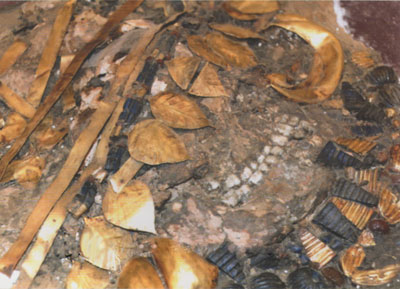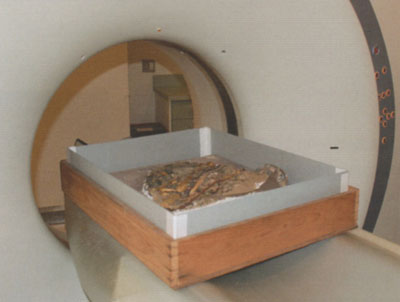 Some 4,600 years ago processions of royal courtiers—including soldiers, musicians, ladies-in-waiting, ox- cart and chariot drivers, and animal grooms—accompanied their king or queen to the afterlife. Descending a ramp into an earthen pit at the biblical site popularly known as Ur of the Chaldees, they were put to death by drinking poison from small, clay cups. This account was expounded by Sir Leonard Woolley, the excavator of Ur in the 1920s and 30s, to describe the funerary proceedings surrounding royal figures in Ur’s Early Dynastic Period (ca. 2600–2350 BC). Recent research using modern scientific tests and imaging technology, however, is beginning to rewrite this long-accepted tale of how and why Ur’s sacrificial dead met their ultimate fate.
Some 4,600 years ago processions of royal courtiers—including soldiers, musicians, ladies-in-waiting, ox- cart and chariot drivers, and animal grooms—accompanied their king or queen to the afterlife. Descending a ramp into an earthen pit at the biblical site popularly known as Ur of the Chaldees, they were put to death by drinking poison from small, clay cups. This account was expounded by Sir Leonard Woolley, the excavator of Ur in the 1920s and 30s, to describe the funerary proceedings surrounding royal figures in Ur’s Early Dynastic Period (ca. 2600–2350 BC). Recent research using modern scientific tests and imaging technology, however, is beginning to rewrite this long-accepted tale of how and why Ur’s sacrificial dead met their ultimate fate.
On April 15, 2007, the first of several proposed tests took place on a pair of crushed skulls belonging to sacrificial victims from two of Ur’s royal tombs. These skulls, part of the Museum’s famous Ur collection that includes two of six crushed skulls, were originally waxed and preserved in situ with their ornaments by Woolley and then excavated as an ensemble for further study and museum display.
The first skull is of a maiden, known as body 53 from grave PG 1237—“The Great Death Pit” which contained the remains of 74 sacrificial victims, mostly elaborately dressed young women. Smashed in a three-quarter profile facing left, this skull is covered in glittering jewels of gold and lapis lazuli. The second skull is a male from grave PG 789—the “King’s Grave.” Wearing a copper helmet, he was probably a soldier.

Both skulls were taken to the Hospital of the University of Pennsylvania for CAT (Computed Axial Tomography) scans to generate 3-dimensional images of the skulls. This will allow them to be reconstructed and examined for evidence relating to their cause of death. It will also give us a better understanding of how the ornaments adorning the maiden were worn on her head, providing a framework for future reconstructions and a museum display of the sacrificial maidens.
These scans are also the first step in determining the feasibility of further scientific tests. For example, isotopic and DNA analyses might help determine the homeland of the sacrificial victims and their relationship to other ancient and modern ethnic groups. Did they come from as far away as modern India and Pakistan, as some scholars have suggested?
Using modern forensic analysis, we might be able to deter- mine whether the victims’ bones were exposed to heat before burial, as proposed for other skeletons at Ur. If so, this would overturn the long-accepted notion that they were poisoned in the burial pits and might instead suggest that they were killed before the final burial ceremony and preserved using primitive mummification techniques.
Although we have taken only the first step in these scientific tests, the CAT scans of the Ur skulls have already revealed how the techniques of modern science can be applied to help rewrite some of archaeology’s most famous and enduring tales.
